Delve into the intriguing world of 23 foods banned in America. From health risks to ethical concerns, these prohibitions highlight the diverse reasons certain delicacies are off-limits. Whether it’s due to potential illness, environmental impact, or cultural misunderstandings, the list serves as a fascinating insight into the regulations surrounding the food industry. Discover why these foods have been deemed illegal and what makes them controversial. Prepare to be surprised by the stories behind these forbidden culinary delights, each with its unique tale and reason for being banned.
1. Shark Fins

Shark fins, once a delicacy, are banned to curb cruel fishing practices. Finning involves removing a shark’s fin and discarding the rest, often leading to the shark’s death. This inhumane practice threatens shark populations. Consequently, U.S. laws prohibit shark fin sales.
The ban aims to protect endangered species and promote sustainable fishing. Environmentalists praise this step, while some culinary traditions face challenges adapting.
This prohibition underscores the complex relationship between cultural heritage and ecological responsibility. A significant move towards ocean conservation, it reflects global efforts to safeguard marine life.
2. Foie Gras

Foie gras, a luxury delicacy, faces bans in certain states due to animal cruelty concerns. The production involves force-feeding ducks and geese to enlarge their livers. Animal rights activists decry this method as inhumane. While prized for its rich flavor, the process raises ethical questions.
California’s ban exemplifies a growing movement towards ethical eating. Chefs and food lovers debate the balance between tradition and compassion.
The foie gras controversy highlights a broader trend in food ethics, challenging consumers to reconsider their culinary choices.
3. Bushmeat
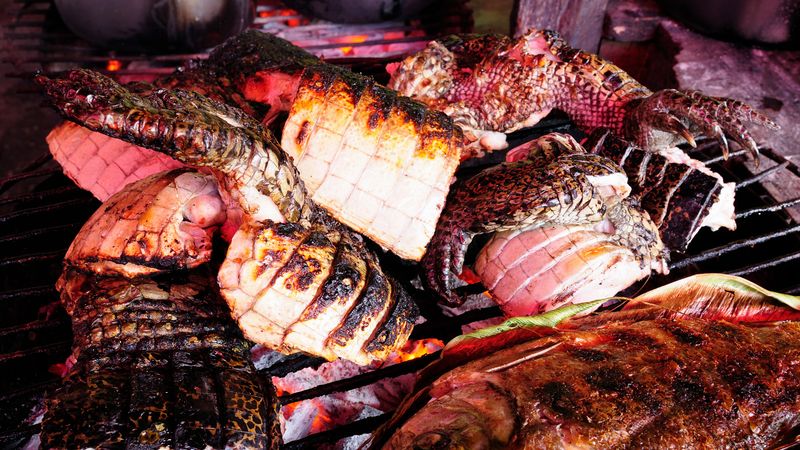
Bushmeat, or wild animal meat, is illegal in the U.S. due to zoonotic disease risks. Handling and consuming such meat can transmit viruses like Ebola. The ban aims to prevent outbreaks and protect biodiversity. Conservationists and health experts support this law to preserve wildlife and public safety.
Despite its cultural significance in some regions, bushmeat poses serious health threats. The prohibition reflects a commitment to both ecological preservation and human health.
The bushmeat ban is a part of wider efforts to curb illegal wildlife trade globally.
4. Red Dye No. 3

Red Dye No. 3, a vibrant food coloring, was banned by the FDA due to cancer concerns. Studies linked it to tumors in lab animals, prompting its removal from foods. While colorful treats are tempting, safety outweighs aesthetics. This ban reflects ongoing efforts to eliminate potentially harmful additives from our diet.
As a result, manufacturers reformulated products to comply with safety standards. The dye’s removal signifies a shift towards cleaner labels and transparent ingredient lists.
Consumers now enjoy peace of mind, knowing food colors are carefully regulated for health.
5. Brominated Vegetable Oil (BVO)

Brominated Vegetable Oil (BVO), used in some sodas, faces a ban due to health concerns. Linked to neurological damage, BVO’s risks outweigh its benefits. The FDA’s decision to ban it marks a commitment to public health. Companies must reformulate beverages by 2025, ensuring safer options for consumers.
This move highlights the importance of scrutinizing food additives and prioritizing safety.
BVO’s ban is a victory for health advocates, reflecting growing awareness of ingredient impacts.
Consumers can look forward to cleaner, more transparent labels in their favorite drinks.
6. Absinthe

Absinthe, known for its mystique, was once banned for its thujone content. Believed to cause hallucinations, thujone fueled the spirit’s infamy. While modern absinthe is thujone-free, the historic ban lingers. Today, the drink is legal, but the myth persists.
Absinthe’s story is a blend of history, art, and controversy. Its allure endures, captivating new generations.
This ban reflects the evolving understanding of substances once feared. Absinthe stands as a testament to shifting perceptions in the beverage world, where regulations adapt with knowledge.
7. Raw Milk
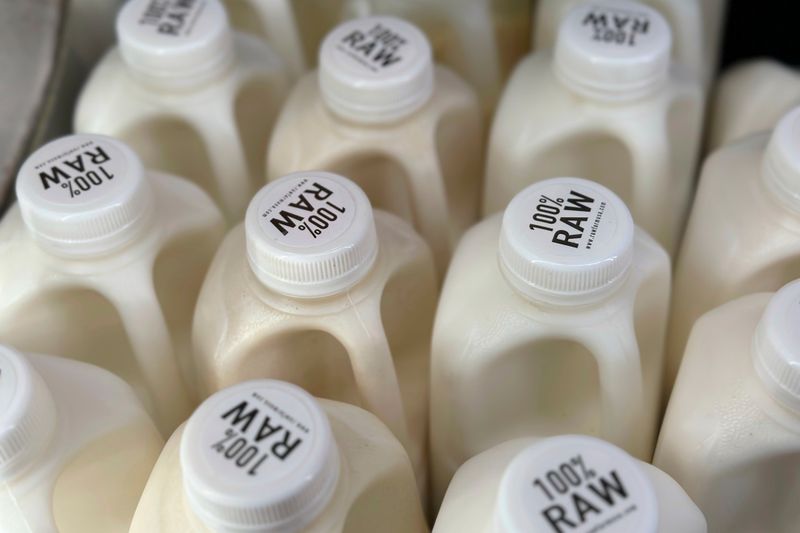
Raw milk, treasured by some for its unadulterated taste, poses significant health risks. It can harbor bacteria like E. coli and Salmonella, leading to serious illnesses. The U.S. bans its interstate sale to protect public health. Despite the controversy, raw milk advocates argue for its nutritional benefits. However, without pasteurization, the potential for contamination remains high. The debate continues, balancing flavor with safety concerns.
Historically, pasteurization transformed dairy safety, sparking ongoing discussions. This ban reflects a broader struggle between natural food movements and modern safety standards.
8. Epoisses Cheese

Epoisses cheese, rich and aromatic, is banned due to its unpasteurized milk content. This poses a Listeria risk, leading to its prohibition for safety. Despite its alluring taste, such cheeses challenge modern food safety norms.
Artisan traditions clash with health regulations, sparking debates on culinary freedom. Advocates argue for choice, while authorities prioritize public health.
The ban on Epoisses highlights the tension between heritage and safety, inviting reflection on our culinary landscape’s future. It’s a poignant reminder of the balance between enjoyment and well-being.
9. Sea Turtle Eggs
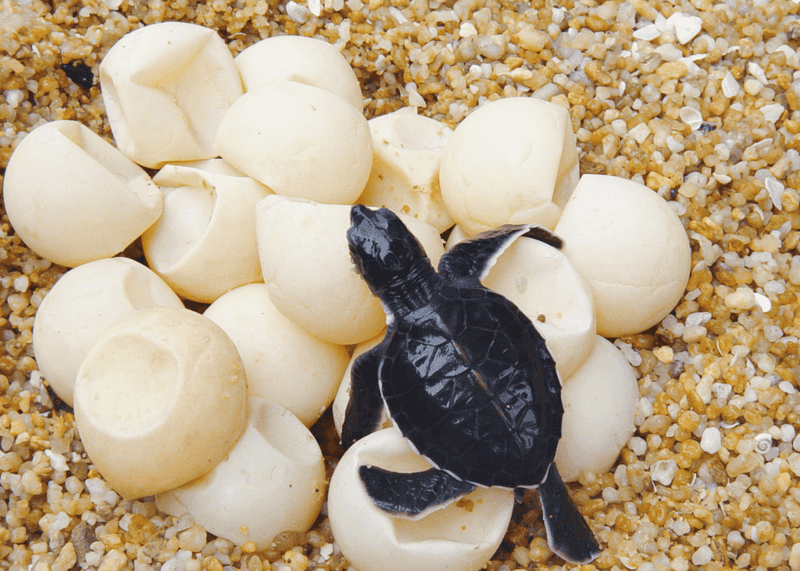
Sea turtle eggs, once harvested for delicacies, are now protected by law. The ban aims to conserve endangered turtle species, reflecting ecological priorities. This prohibition supports marine biodiversity and conservation efforts.
Turtle populations face threats from habitat loss and poaching, making legal protection crucial. The ban underscores a commitment to environmental stewardship and global conservation.
Efforts to save turtles showcase the intersection of law, ecology, and community engagement. Protecting these eggs is a vital step towards ensuring oceanic health and sustainability for future generations.
10. Fugu (Pufferfish)
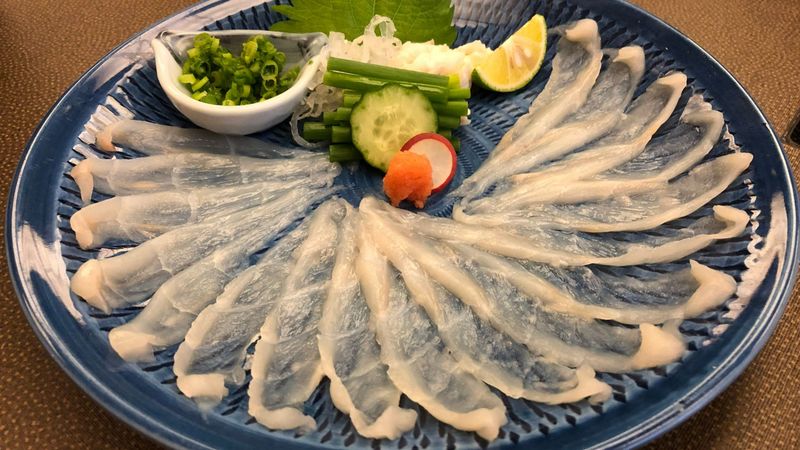
Fugu, a Japanese delicacy, contains the potent neurotoxin tetrodotoxin. Improper preparation can be fatal, leading to strict regulations. In the U.S., only licensed chefs can prepare fugu, ensuring safety. This maintains the delicate balance between culinary artistry and public health.
Fugu’s allure is its danger, drawing thrill-seekers. Yet the risk requires expert handling.
The fugu regulations highlight the tension between tradition and safety, a reminder of the culinary world’s complex landscape. The dish remains a testament to skill and caution in gastronomy.
11. Beluga Caviar

Beluga caviar, a symbol of luxury, faces import bans to protect the beluga sturgeon. Overfishing has endangered this species, prompting conservation measures. The U.S. ban reflects a commitment to biodiversity and marine life protection.
This prohibition underscores the luxury industry’s impact on wildlife, urging sustainable practices. Consumers are encouraged to consider ecological costs in their choices.
The ban on beluga caviar highlights the intersection of luxury and responsibility, challenging industries to innovate for a sustainable future. It serves as a reminder of the shared responsibility to preserve our planet.
12. Casu Marzu

Casu Marzu, an unusual Sardinian cheese, is banned due to its live insect content. The larvae aid fermentation but pose health risks. U.S. food safety laws prohibit such practices, prioritizing consumer welfare.
Despite its unique flavor, the cheese’s legality clashes with health standards. This ban reflects the challenge of balancing cultural heritage with modern safety.
Casu Marzu’s story is a curious blend of tradition and regulation, inviting reflection on food’s cultural dimensions. It serves as a reminder of the diverse culinary practices that enrich global cuisine.
13. Pink Slime

Pink slime, or lean finely textured beef, is controversial despite being legal in the U.S. Criticized for its production methods, it faces bans elsewhere. The additive raises questions about food transparency and quality.
Public concern over pink slime highlights the need for clear labeling and informed choices. The debate underscores the tension between industry practices and consumer expectations.
This controversy reflects broader discussions on food safety, inviting scrutiny and accountability within the meat industry. Pink slime remains a symbol of the complex dynamics in food production.
14. Ractopamine-Fed Meat
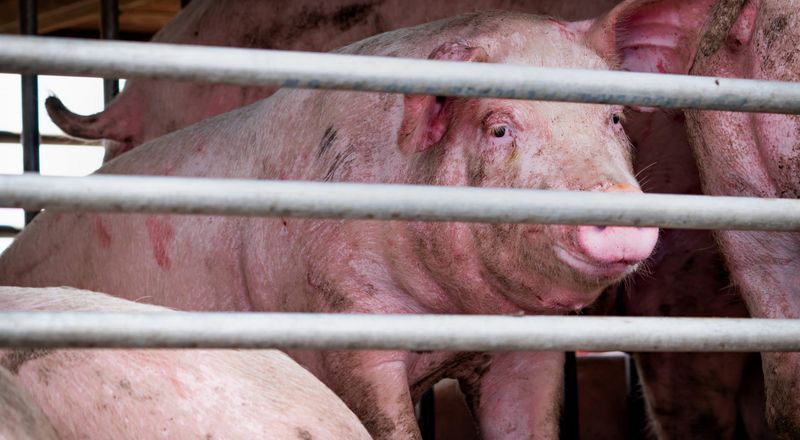
Ractopamine, a feed additive, is banned in meat imports to the U.S. Concerns over health and animal welfare drive this restriction. While allowed domestically, many countries prohibit its use. The ban signifies a commitment to safe, ethical food practices.
Debates around ractopamine highlight differing global standards. The U.S. aims to protect consumers by restricting imports, reflecting evolving food safety priorities.
This ban encourages greater scrutiny of agricultural practices, fostering transparency and responsible sourcing. Ractopamine-fed meat stands at the intersection of health, ethics, and global trade.
15. Certain Canned Fruits
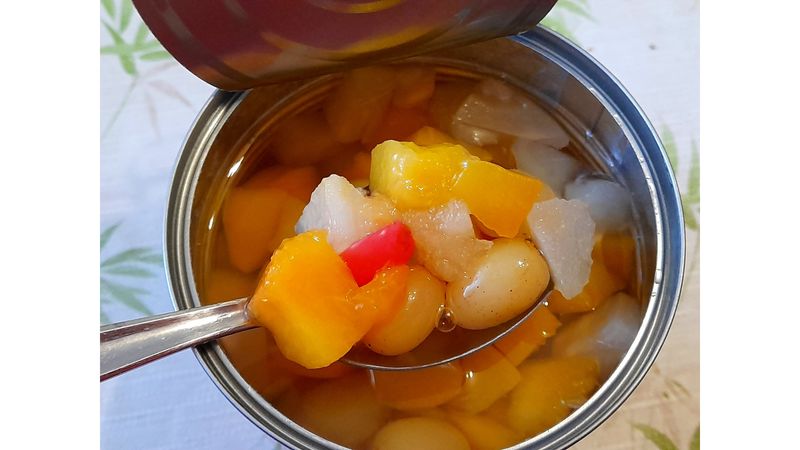
Certain canned fruits with saccharin face bans due to outdated standards. The artificial sweetener’s health concerns led to a reevaluation of its use. The FDA’s decision reflects a commitment to modernizing food safety regulations.
This ban highlights the shift towards healthier, more natural sweeteners. Consumers now enjoy improved products with transparency in ingredient choices.
The prohibition of saccharin-laden fruits underscores the importance of staying current with scientific advancements in nutrition. It serves as a reminder of the dynamic nature of food safety regulations.
16. Chlorpyrifos Residue
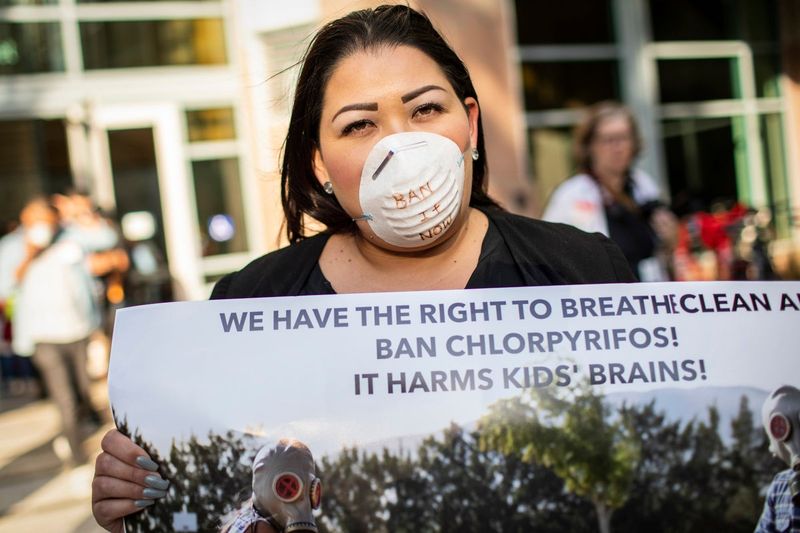
Chlorpyrifos, a pesticide, faces bans due to health risks. Studies link it to neurological damage, particularly in children. Several U.S. states restrict its use to protect public health. This ban underscores the importance of safe agriculture practices.
The prohibition reflects growing awareness of pesticide impacts on human health. Consumers increasingly demand cleaner, safer produce.
Chlorpyrifos’ ban highlights the need for sustainable farming solutions, balancing crop yield with well-being. It’s a pivotal step towards healthier food systems, ensuring long-term agricultural sustainability.
17. Kinder Surprise Eggs

Kinder Surprise eggs, beloved by children worldwide, are banned in the U.S. due to safety concerns. Each chocolate egg contains a small toy, posing a choking risk for young children. This prohibition stems from a 1938 law banning non-nutritive items in food. Despite legal hurdles, the eggs remain popular abroad.
Fans argue for their safety and joy, but U.S. laws prioritize child protection. This ban highlights the balance between delight and danger in consumer products.
The Kinder egg story is a poignant example of differing regulatory perspectives across borders.
18. Green Walnuts
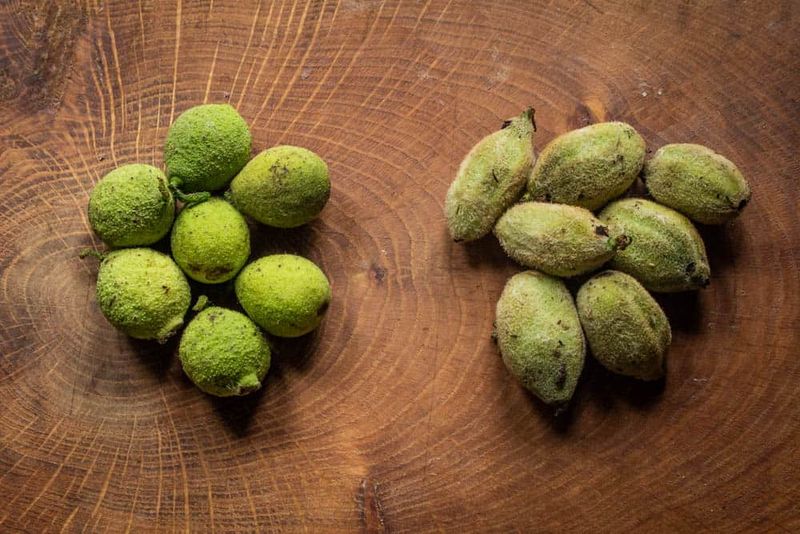
Green walnuts, when pickled improperly, can release toxins. Some pickling methods involve hydrogen cyanide, posing health risks. Consequently, certain imports face bans in the U.S.
This prohibition highlights the importance of safe food processing techniques. Consumers are urged to be cautious with homemade or imported goods.
The green walnut ban underscores the need for awareness in traditional food practices. It’s a reminder of the potential dangers lurking in seemingly innocuous delicacies, emphasizing the role of regulation in food safety.
19. Live Frogs for Food
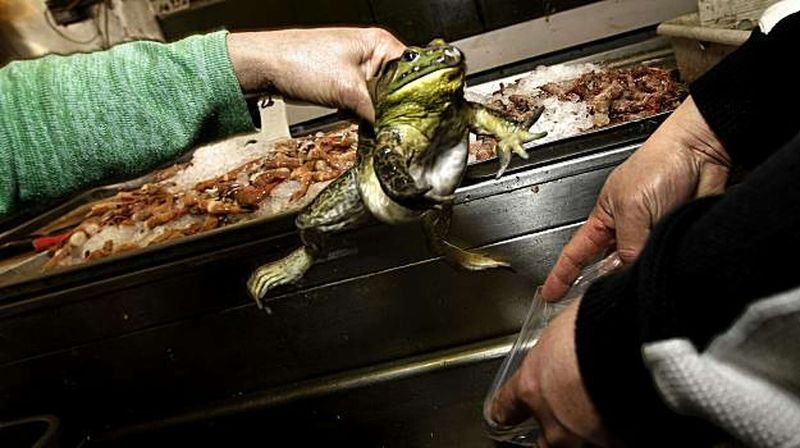
Live frogs, popular in some cuisines, are restricted under invasive species laws. Concerns over ecosystem disruption and public health drive these bans. Certain jurisdictions prohibit their importation for food.
This prohibition highlights the balance between culinary tradition and ecological responsibility. The law aims to protect native wildlife and prevent ecological imbalances.
Live frogs’ restriction underscores the complexity of food regulations, blending cultural respect with environmental stewardship. It’s an example of how culinary practices evolve in response to ecological needs.
20. Colored Polypropylene in Candy

Colored polypropylene additives in candy face bans due to lack of FDA approval. These additives raise concerns about safety and consumer transparency. U.S. regulations prioritize health, leading to restrictions on such substances.
This ban underscores the importance of clear labeling and ingredient safety in confectionery. Manufacturers must adapt to comply with stringent standards.
Colored polypropylene’s restriction is part of broader efforts to ensure food additives do not compromise health. It’s a testament to the evolving landscape of food safety, advocating for informed consumer choices.



